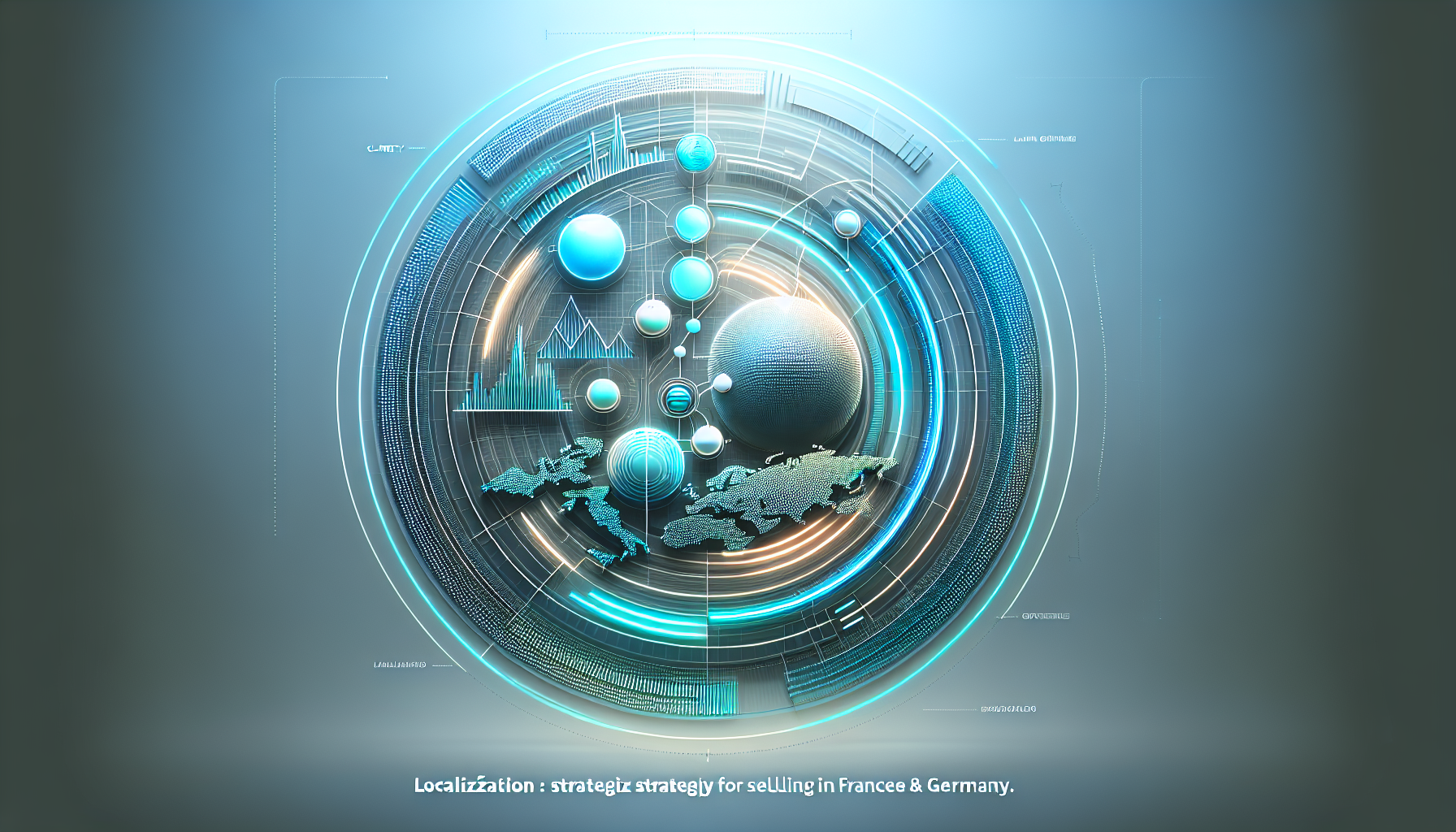About eldris
Clone.Eldris.ai empowers brands to instantly replicate and translate their websites for seamless global expansion. Our automated system delivers SEO-friendly, multilingual clones that launch in days, not months.
In This Article
- Develop a distinct Localization Strategy for each country—one size does not fit all.
- Adapt branding to reflect cultural preferences: aspirational in France, functional in Germany.
- Localise customer service communications, not just product descriptions.
- Understand and follow country-specific legal regulations and taxation standards.
- Leverage local SEO insights and native keyword data for higher visibility.
- Integrate local payment methods and region-trusted logistics networks.
- Utilise professional localisation tools to enhance scalability and accuracy.
- Draw inspiration from successful case studies of localisation in action.
Why Localization Matters in European Ecommerce
Understanding Cross-Border Marketplace Dynamics
Entering European markets demands more than just language translation. A successful Localization Strategy aligns with local consumer behaviours, values, and regulations. In France and Germany—two of Europe’s most influential ecommerce markets—shoppers expect authentic experiences that resonate culturally and linguistically. The unified European Union might suggest a seamless approach, yet the buying patterns, legal frameworks, and linguistic preferences across nations are vastly diverse. This variation necessitates a thoughtful, tailored strategy for each target country.

Moreover, European buyers are increasingly discerning. They scrutinise product reviews, value transparent pricing practices, and expect localisation down to payment formats and customer service response times. A strong Localization Strategy that specifically addresses these expectations not only boosts conversions, but also fosters brand loyalty. If you treat a French customer like a German one or vice versa, even subtle mismatches in tone or UX can erode trust. Therefore, a carefully crafted localisation plan is the cornerstone of cross-border ecommerce success in Europe.
Key Differences Between French and German Buyers
Cultural, Language, and UX Nuances
Understanding the psychological and cultural underpinnings of consumer behaviour in France and Germany is key to developing an impactful Localization Strategy. French consumers, for instance, are style-conscious, value local flair, and are attuned to branding aesthetics. They prefer polished branding, persuasive language, and promotions that evoke emotion. French ecommerce sites often resemble editorial fashion pages—encouraging exploration and inspiration.
Germans, on the other hand, prioritise functionality, product legitimacy, and safety. German buyers prefer detailed product descriptions, technical specifications, and clear return policies. Unnecessary embellishments can tend to be viewed with scepticism. They value privacy and robust warranties and expect precision in communication.
These behavioural insights should inform your approach to UX design. A busy, animated interface might perform well with French audiences, while Germans favour clean layouts that offer comprehensive information at a glance. Furthermore, Germany’s relatively lower mobile conversion rates compared to France highlight the importance of optimising for desktop experiences in the German market.
“Without understanding cultural subtleties, a localisation effort becomes mere translation—an expensive mistake,” says ecommerce strategist Lucie Maréchal.
Localized Branding Tips for France
In France, brand identity carries immense weight. To resonate, your brand must not only feel premium but also uniquely tailored. A compelling French Localization Strategy should prioritise aspirational tone, curated aesthetics, and content that exudes sophistication. Fashion, luxury, and food sectors in particular thrive when the branding taps into French sensibilities.
Ensure your messaging is naturally phrased in native French—not merely translated. Employ professional copywriters well-versed in the nuances of French culture. Incorporate cultural references, idioms, and even local holidays into your campaigns. French buyers appreciate storytelling, so weave narratives that evoke emotion and encapsulate lifestyle.
Visual content must also match these expectations. Sleek web design, elegant typography, and professional imagery can signal quality and authenticity. Moreover, the French consumer responds well to endorsements and local influencers. Including user-generated content and testimonials tailored for French buyers can dramatically increase click-through and conversion rates.
Localized Branding Tips for Germany
While French branding focuses on emotion, German branding emphasises engineering, security, and reliability. To build trust with German buyers, clarity is paramount. Your German-language website should present structured navigation, clear product benefits, and a no-nonsense contact process. Germans place importance on “Technische Genauigkeit”—technical accuracy. Ensure product descriptions are comprehensive, including material origin, specifications, certifications, and usage instructions.
Use formal language in your German communication strategy, especially in initial interactions. This reflects a level of professionalism expected by most German customers. Moreover, Germans are cautious with unfamiliar brands. Including TÜV or ISO certifications, positive third-party reviews, and detailed FAQs can offset scepticism and build consumer confidence.
Visual branding should mirror this rationality. Avoid overly stylised or flamboyant designs. Instead, opt for minimalist layouts with strong trust signals—such as seals of approval and secure checkout icons. And unlike French ecommerce, German customers often prefer utility over aesthetic; thus, emphasise how your product solves a problem rather than how it enhances a lifestyle.
Optimising Language and Customer Support
Accurate, native-level language localisation is a fundamental pillar of success. Even minor linguistic blunders can appear unprofessional and diminish trust. Successful localisation extends beyond product pages and into live chat, email communications, return policies, and help centre documentation.
The French value personalised service. Using localised greetings and regional variations in formal address (such as “vous” vs. “tu”) contributes to a positive customer experience. Likewise, Germans expect efficient, punctual service. Response times should be documented clearly, and automated messages must not only be drafted in German, but also reflect local terms and context.
Offering multilingual support staff or dedicated country-specific customer service lines can significantly increase consumer satisfaction. Also, consider integrating AI tools with native language capabilities to manage chat support and email queries efficiently. These steps can help position your brand as truly local, not foreign.
Regulatory Compliance and Taxation Differences
Each EU country has its unique approach to product labelling, VAT thresholds, consumer rights, and import regulations. France and Germany are no exception. A robust Localization Strategy must also encompass legal compliance to ensure longevity and avoid costly fines.
In France, businesses must display pricing inclusive of VAT, and local regulations require that information be clearly labelled in the French language. Moreover, the “Loi Hamon” allows consumers a 14-day return period, and you must make that right prominent. Failing to comply could result in fines and damaged reputation.
Germany mandates rigorous standards under the “German Packaging Act” and energy labelling for electronics. Similarly, transparency is key to German ecommerce law. Businesses must provide legal disclosures such as “Impressum” pages and clear cancellation policies. Make sure you consult experts who specialise in German compliance for ecommerce operations.
For tax handling, working with tax compliance automation platforms or appointing VAT intermediaries could simplify processes. But it’s crucial that these systems align specifically with both French and German fiscal mandates.
Localized SEO Strategy for European Reach
SEO is not a one-size-fits-all activity in multilingual markets. A successful localization strategy integrates International SEO (ISEO), targeting search engines with locally relevant keywords, schema, and content structures. Google is dominant in both France and Germany, but user search behaviour dramatically differs.
Keyword research must be conducted in each native language—preferably with local SEO specialists. Keywords that perform well in English markets rarely translate directly. For instance, a generic translation of “home decor” to “décoration maison” or “Wohnkultur” might yield negligible SEO traction unless verified against native search volume data.
Meta tags, headers, alt-text, and image file names should be localised. Slugs and URLs should maintain consistency with native language paths (e.g., /accessoires-maison in French, /wohnaccessoires in German). Additionally, leverage country-code top-level domains or subfolders (e.g., /fr/, /de/) indexed differently by search engines.
Implementing local backlinks from authoritative media and industry-specific sites within each country boosts SEO credibility. For guidance on setting up geotargeting and hreflang tags, reference Learn more about Localization Strategies for European Markets.
Integrating Regional Payment and Logistics Tools
Convenient checkout processes significantly impact conversion rates. Both French and German consumers exhibit strong preferences for local payment methods. While credit cards remain common, alternatives like Klarna, SEPA direct debit, and PayPal dominate in Germany. Meanwhile, Carte Bancaire and mobile wallet integration are prevalent in France.
If customers aren’t presented with familiar payment options, cart abandonment rates soar. Partner with payment gateways that allow regional customisation. Furthermore, ensure pricing is displayed in Euros with tax cost transparency.
On the logistics end, French consumers favour fast delivery with pickup options like Mondial Relay. Germans prefer DHL and trust major carriers with strong local support. Additionally, clarity around returns and tracking is more priced in Germany. Offering pre-paid return labels and detailed tracking links can result in significantly higher customer satisfaction and lifetime value.
For advanced logistics platforms with multi-language capabilities and tax recalibration across borders, view Expert tips for entering the German market.
Picking the Right Localization Tools and Platforms
Managing scalable localisation requires the right tools. Platforms like Lokalise, Transifex, Smartling or Weglot allow for content management and translation synchronisation. These tools often support integration with eCommerce systems like Shopify, Magento, and WooCommerce.
Select a solution that offers glossaries, context preview, and collaboration features. This enables seamless coordination between marketing, development, and translation teams. Importantly, choose platforms that support split testing—that way you can see which messaging resonates more in France versus Germany.
Aside from translation management, consider AI-driven tools for dynamic content replacement. Browser-based geotagging and IP tracking technologies allow you to present different banners or language settings automatically for visitors from different countries. This dramatically improves bounce rates and impression quality.
Case Studies: Success Stories from French & German Expansion
Several ecommerce brands have grown exponentially due to smart localisation. For example, British clothing brand ASOS expanded into Germany by launching a separate German website, hiring native marketing staff, and offering Klarna payments. This tailored approach increased German conversions by 34% in its first year.
Similarly, French fashion brand Sézane entered the German market by maintaining the brand’s Parisian identity while adjusting its website structure and offering bilingual customer support. The brand also collaborated with local German influencers, which led to a 70% increase in first-time German customers.
These examples demonstrate that despite shared EU frameworks, each country demands individualised strategy. Learn more about tactical ecommerce lessons in Read a related article.
Conclusion: Scaling with Localization Across Europe
[CONCLUSION_CONTENT]
Great guide on localization-tactics-for-selling-in-france-and-germany – Community Feedback










